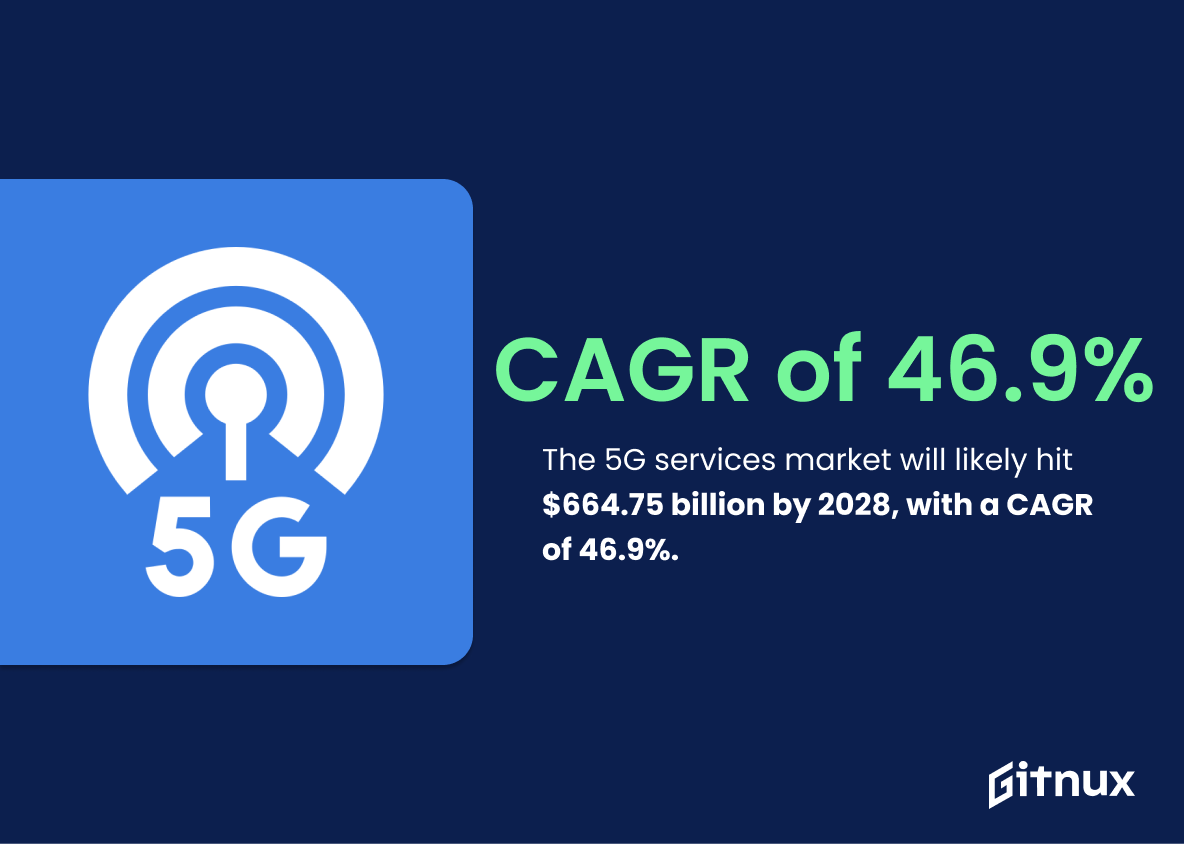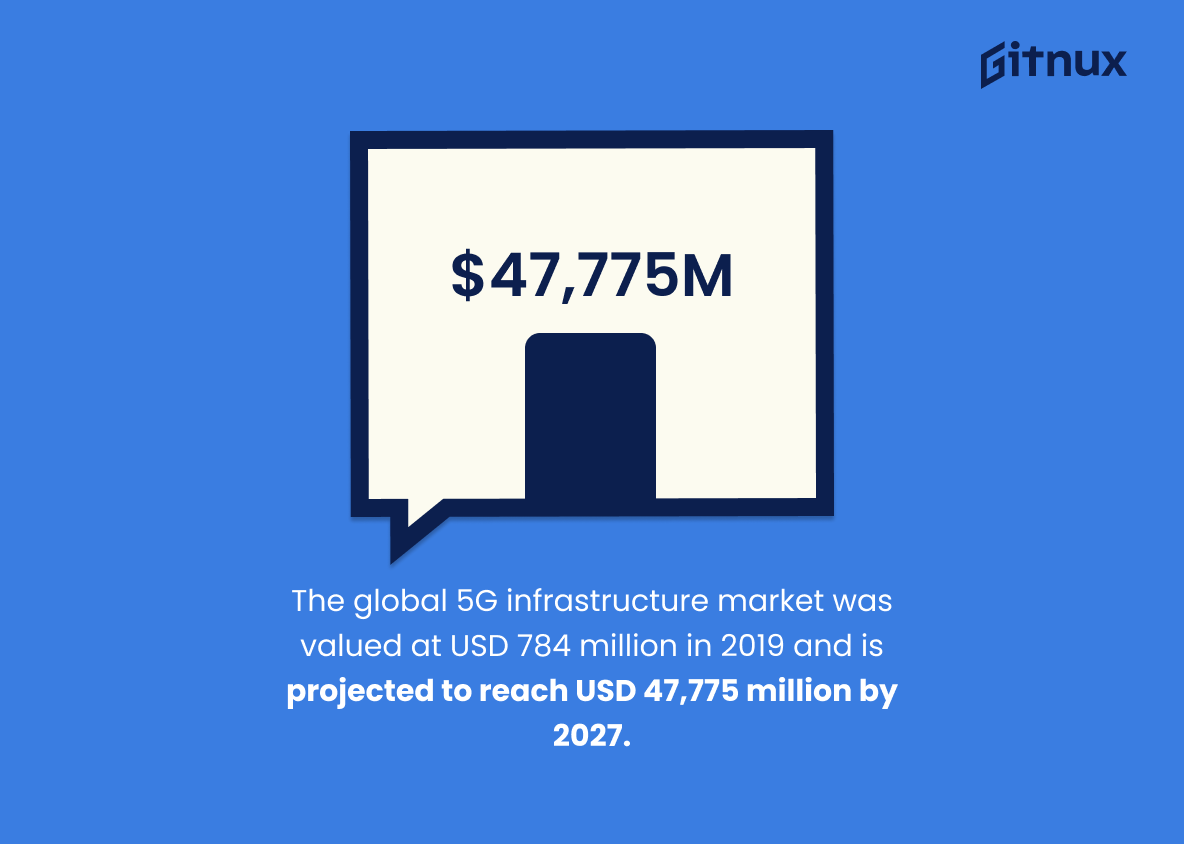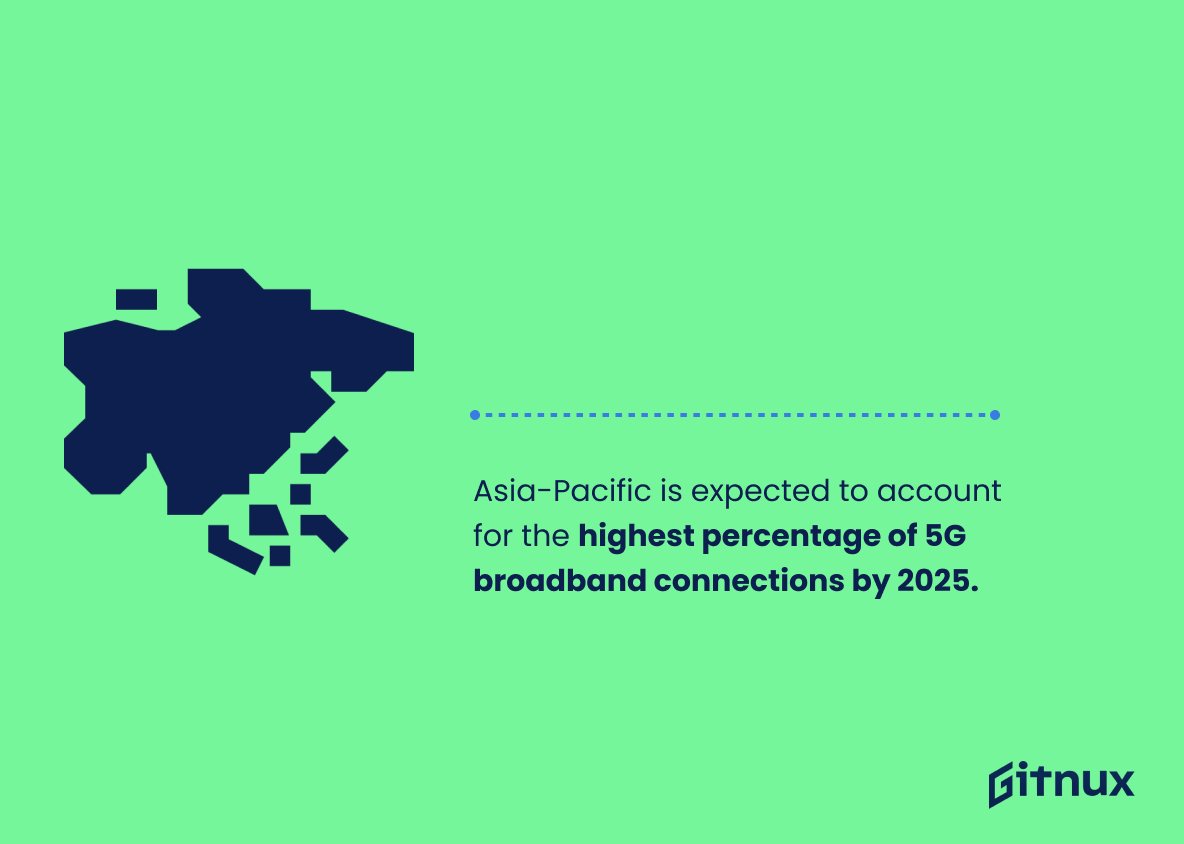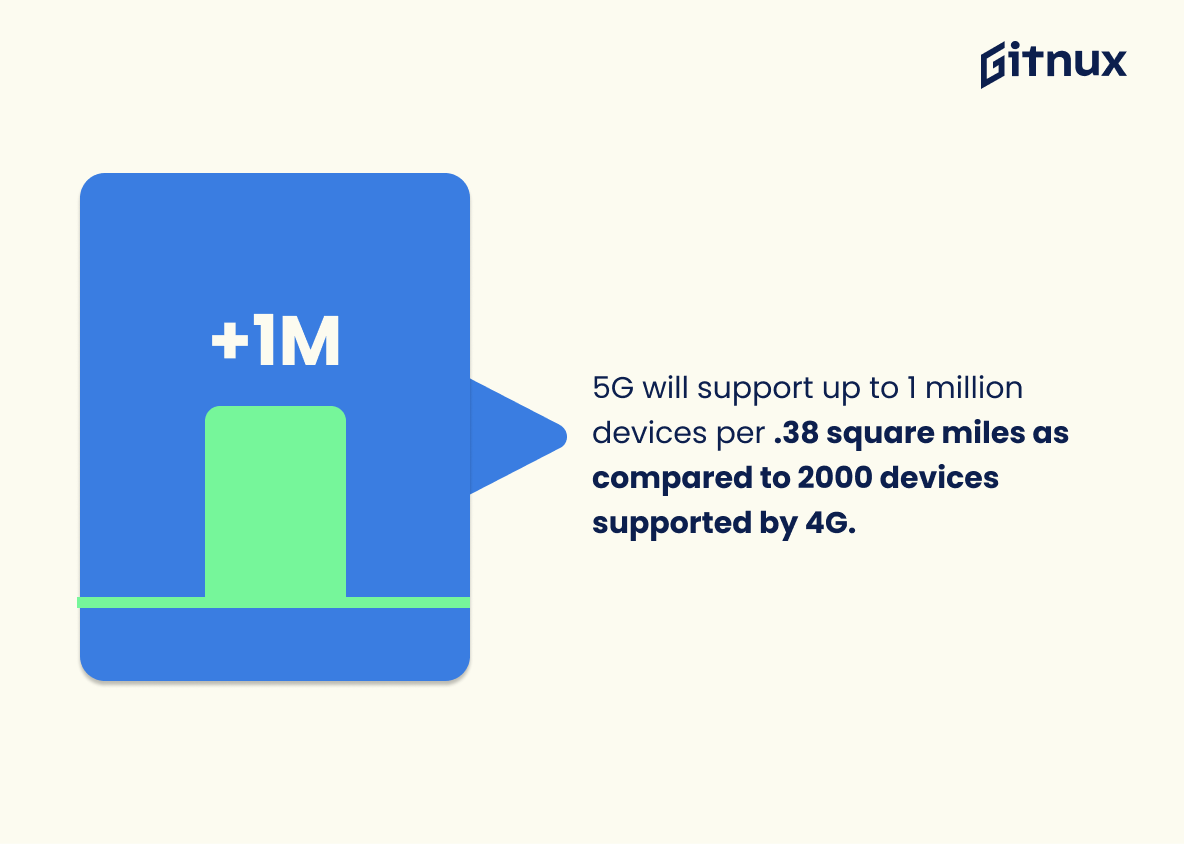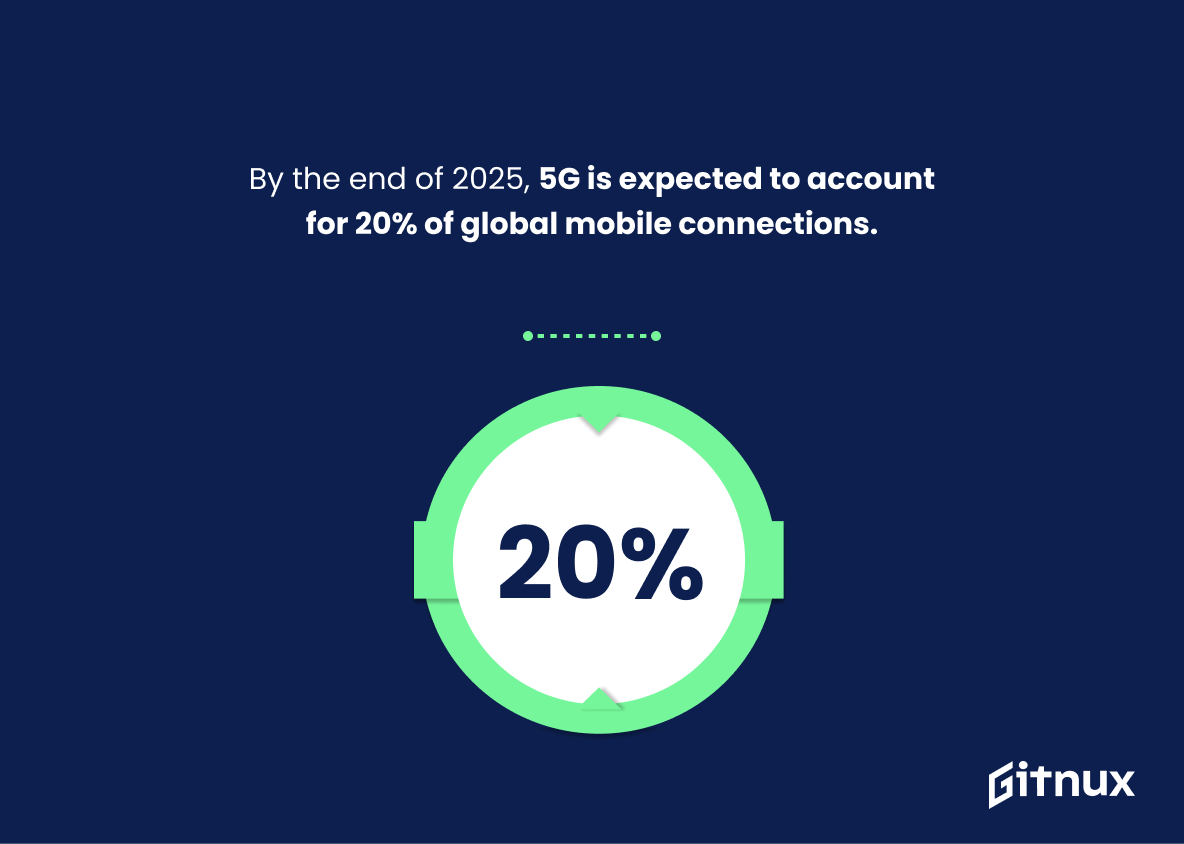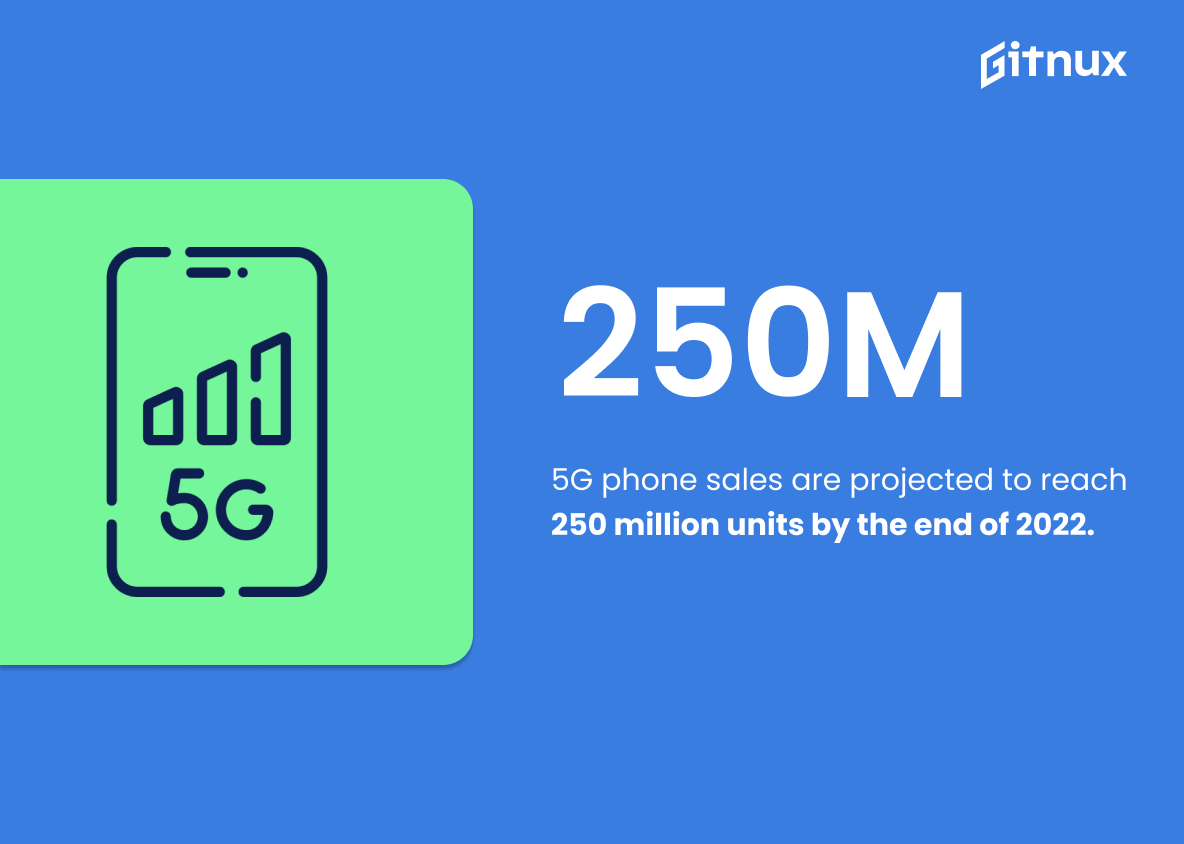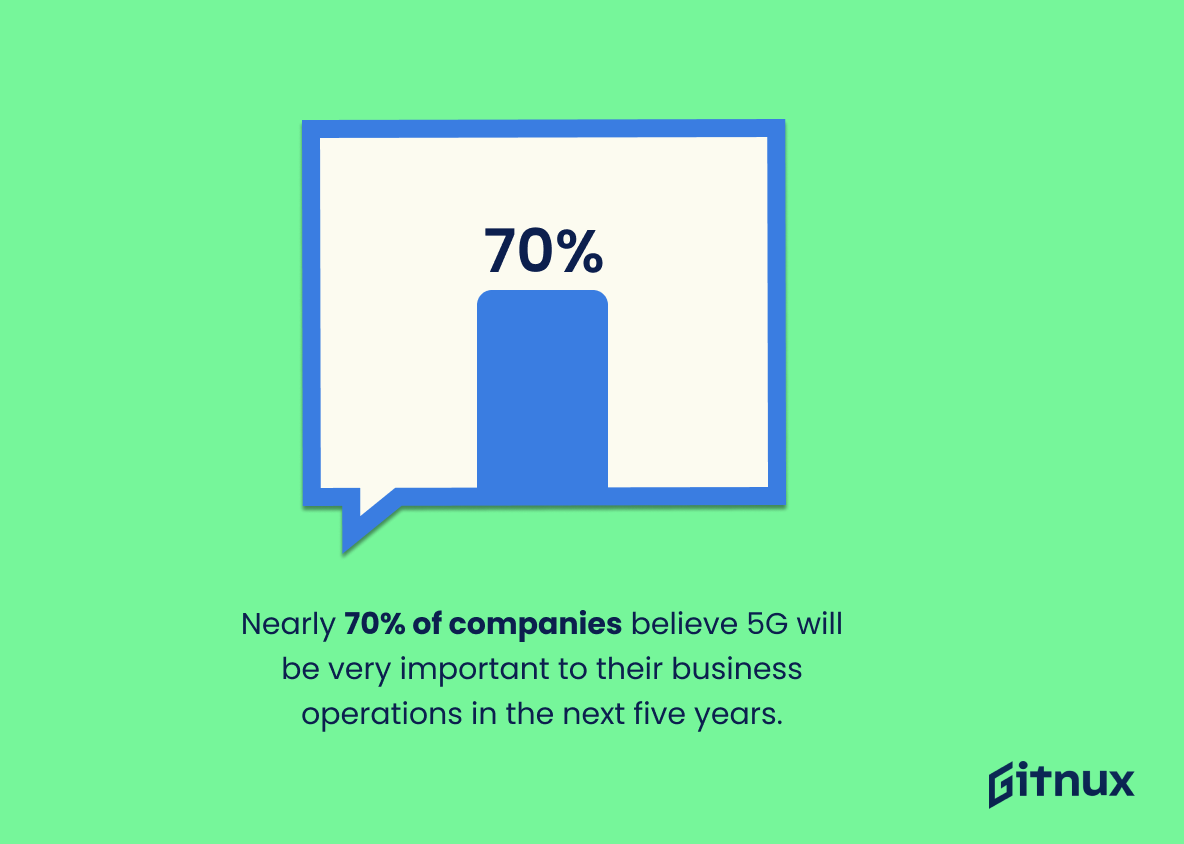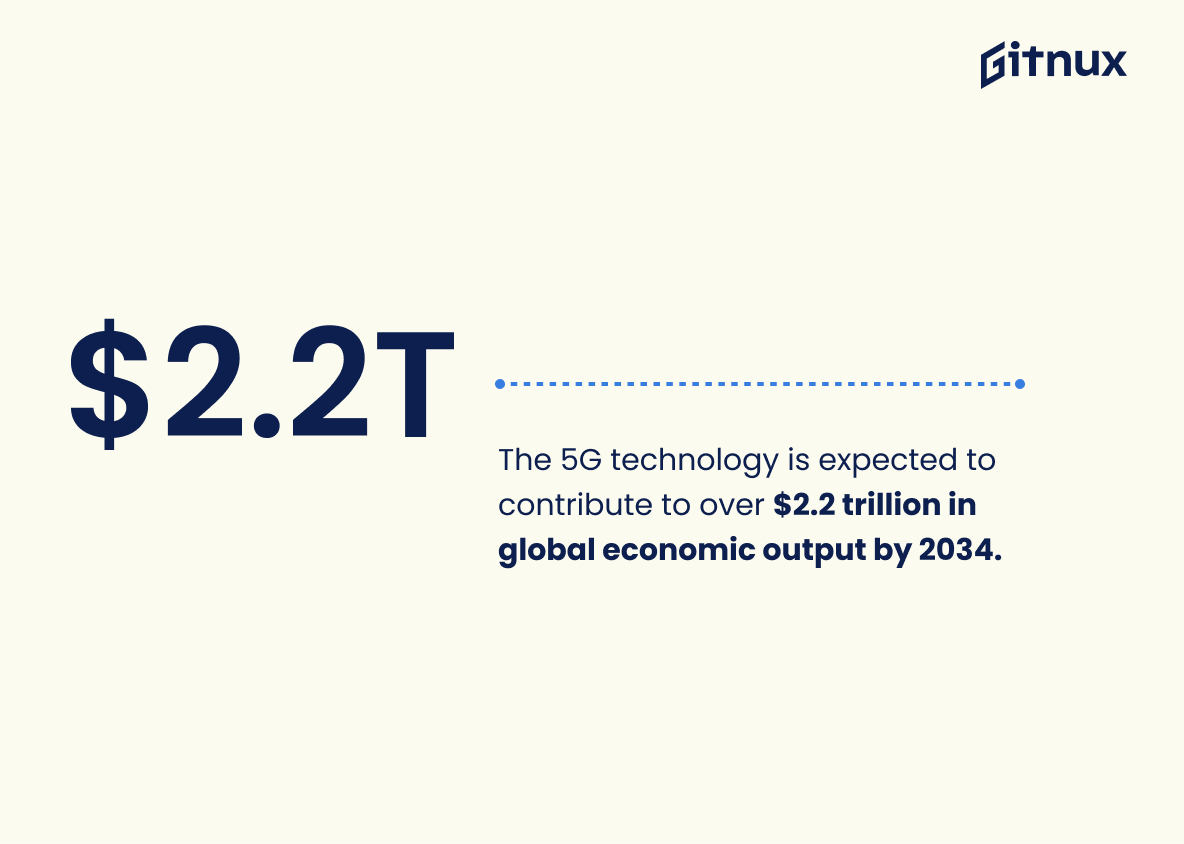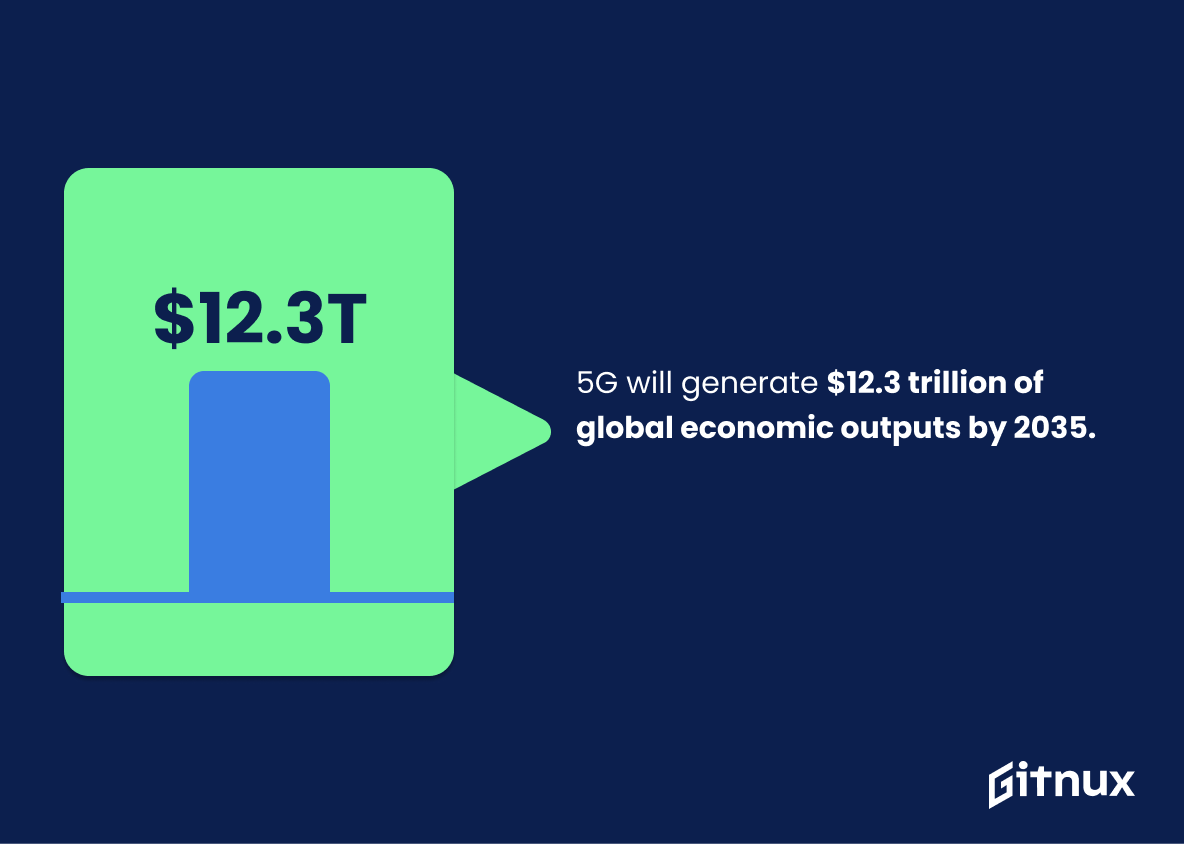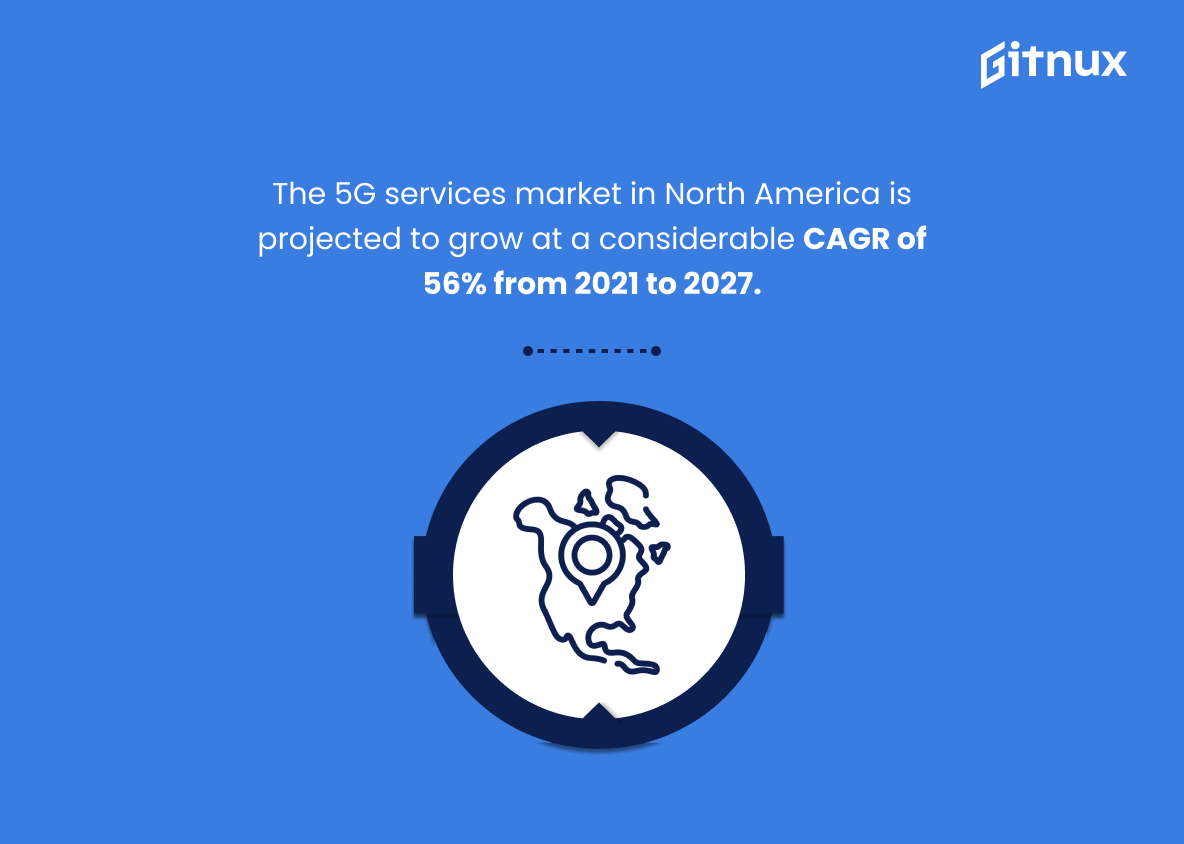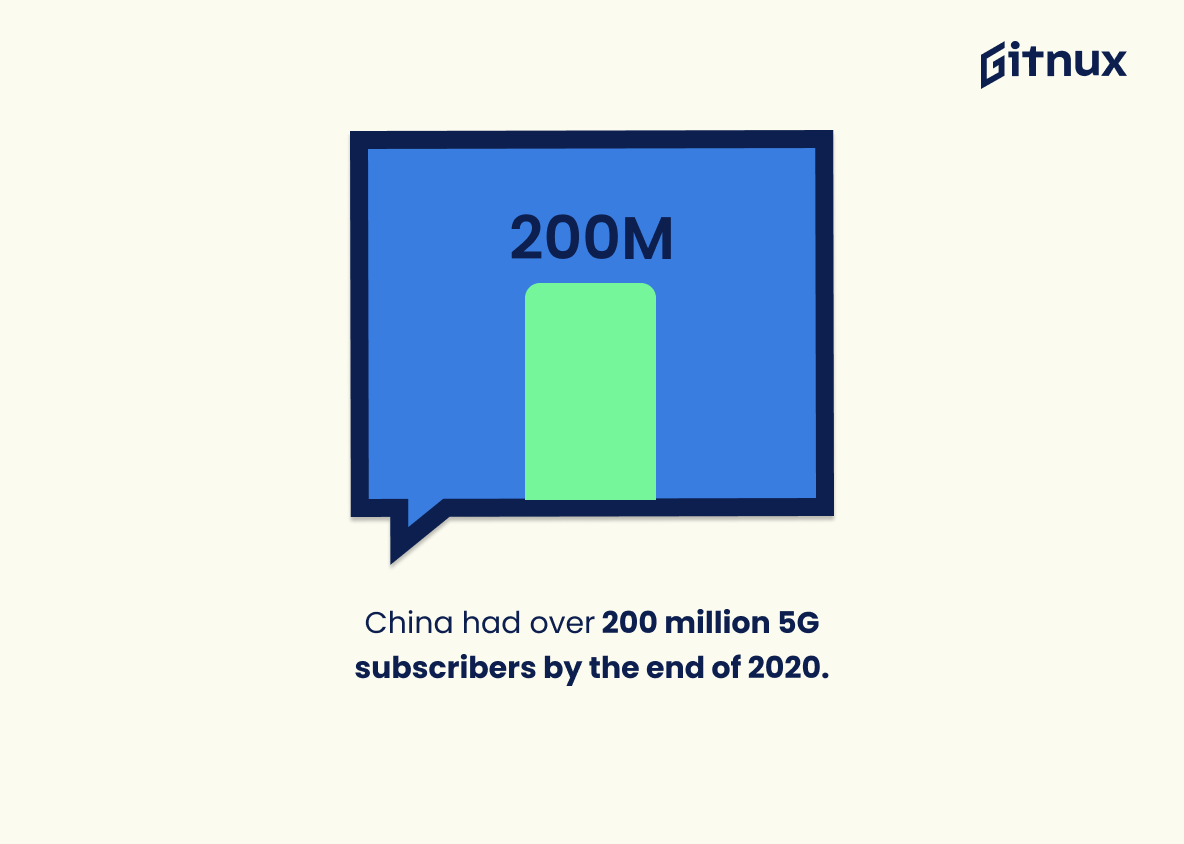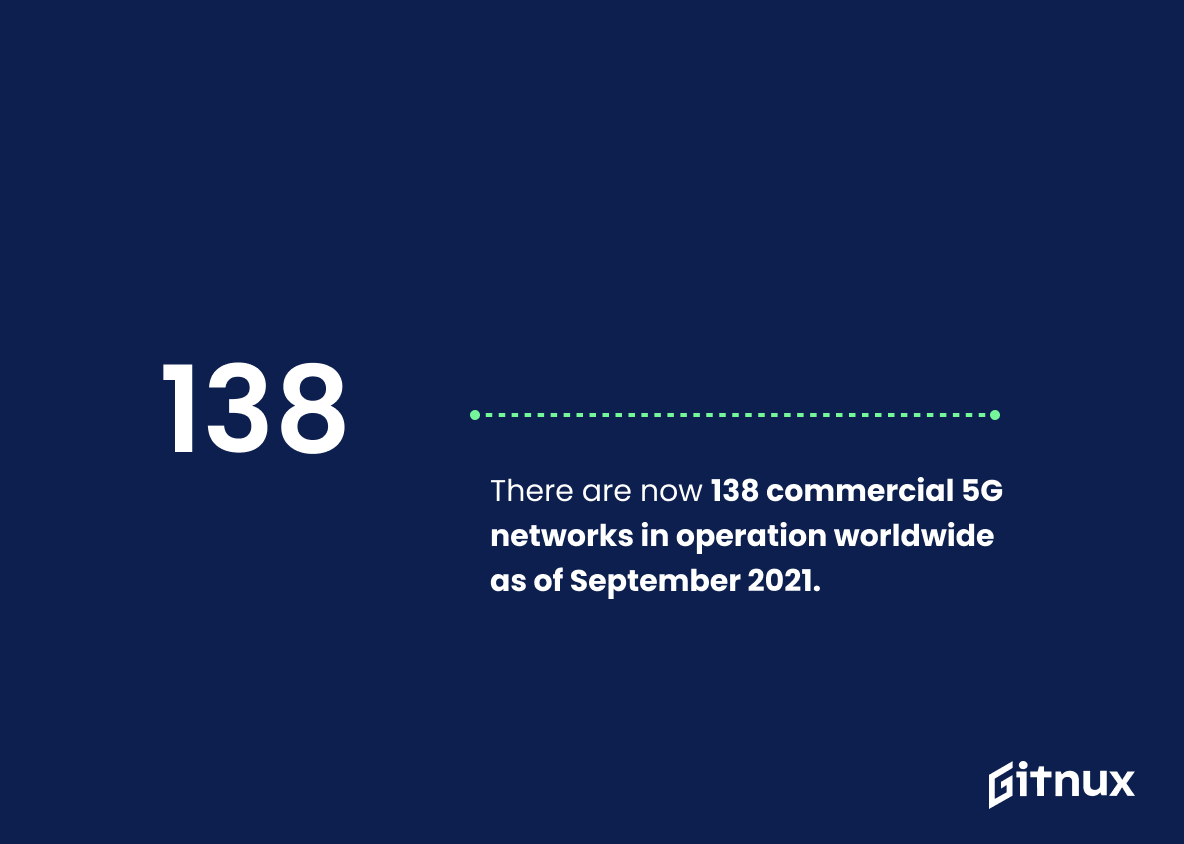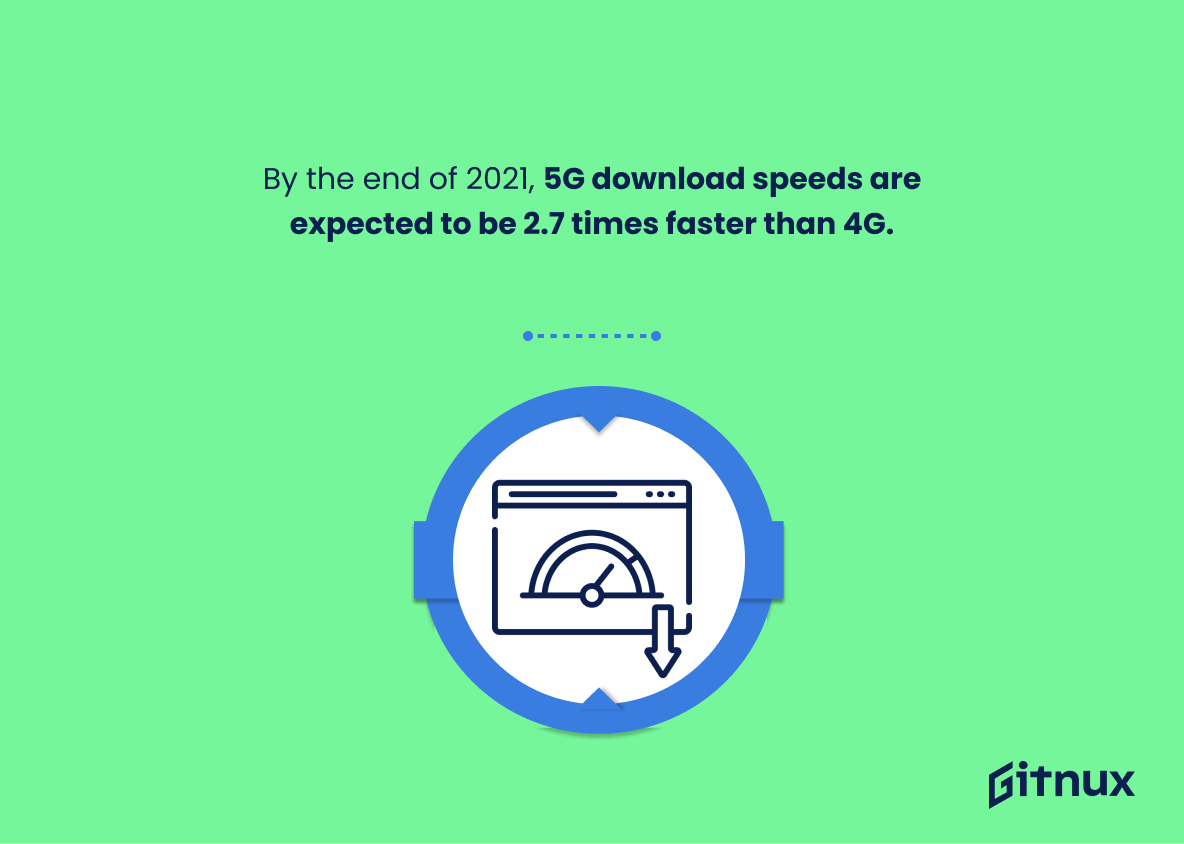As the digital world continues to evolve at a breakneck speed, there’s one technology in particular that’s been creating waves of anticipation – 5G. This fifth-generation wireless technology promises to revolutionize how we connect and communicate, making everything from browsing the internet to controlling smart devices faster and more efficient than ever. But what exactly do the numbers say about this burgeoning industry?
In this blog post, we’ll delve into the world of 5G, using the most current industry statistics to illuminate this technology’s potential. Whether you’re a tech enthusiast or a seasoned industry professional, these 5G industry statistics will offer an intriguing insight into a future defined by unprecedented connectivity.
The Latest 5G Industry Statistics Unveiled
The global 5G services market size is expected to reach USD 664.75 billion by 2028, growing at a compound annual growth rate (CAGR) of 46.9%.
Painting a vivid picture of the near future, this particular statistic throbs with excitement and anticipation. For any enthusiast diving into the sea of 5G Industry Statistics, it carries the weight of the 5G market’s immense potential. The guidance of a staggering USD 664.75 billion market size by 2028 converges with the ambitious rhythm of a 46.9% CAGR.
It’s like a sky full of stars, illuminating the path for stakeholders anticipating their pathway through the rapidly evolving 5G landscape. This upsurge not only charts a promising course for the telecom industry but also resonates with investor interests and end-users exploring the high-speed frontier that 5G will bring about.
The global 5G infrastructure market was valued at USD 784 million in 2019 and is projected to reach USD 47,775 million by 2027.
Painting an impressive monetary portrait, the global 5G infrastructure market amassed a value worth USD 784 million in 2019, with projections catapulting it to a staggering USD 47,775 million by 2027. This monumental increase not only highlights the lucrative nature of the 5G market but also illustrates the rapid pace of this technological revolution.
Any analysis of 5G industry statistics would be incomplete without understanding this value explosion. This is akin to a seismic shift in market value which underlines the tremendous potential and pivotal role of the 5G industry in shaping and driving the future of global communication technologies.
Asia-Pacific is expected to account for the highest percentage of 5G broadband connections by 2025.
The globe finds itself on the brink of a communication revolution as 5G technology defines a new era of connectivity. This impending shift is particularly crystallized in the projection that by 2025, Asia-Pacific is anticipated to witness the highest percentage of 5G broadband connections. Within the framework of a blog post about 5G industry statistics, this figure is a clear beacon indicating the future directions of both technology and industry.
First, it implies the potential 5G holds in transforming Asia-Pacific into a powerhouse of digital innovation. This massive adoption could unleash unprecedented opportunities for businesses, governments, and individuals in the region, shaping a future where opportunities are as boundless as one’s imagination.
Secondly, the statistic underscores the acceleration of digital advancement in emerging markets. It destabilizes the assumption that technological progress is the exclusive domain of the West, revealing how 5G connectivity can obliterate conventional geographic boundaries and redefine global power structures.
Finally, it invites industries from all over the world to recognize and adapt to this shifting trend. Whether it’s the creation of new products or the reconfiguration of business strategies, this rapid increase in 5G connectivity in the Asia-Pacific region demands a rethinking of the business arena. In essence, it’s not just a statistic, but a window into the future where 5G lies at the helm of a digitally interconnected world.
5G will support up to 1 million devices per .38 square miles as compared to 2000 devices supported by 4G.
Imagine the magnitude of 5G’s potential when you consider it will support up to 1 million devices per 0.38 square miles, far surpassing 4G’s ability to support just 2,000 devices. This dramatic increase doesn’t just imply faster internet or clearer voice calls. Rather, it paints a picture of a world that is more interconnected than ever before.
The surge in device support promises a revolutionary transformation across various industries. Indeed, this data acts as a beacon of prediction, signaling that the rise of 5G will power innovation beyond our current imagination, from self-driving cars to smart cities to advanced machinery in manufacturing, leading us into a new epoch of digital evolution.
By the end of 2025, 5G is expected to account for 20% of global mobile connections.
Drawing light upon the potent transition of the digital cosmos, the projection that 5G will constitute 20% of global mobile connections by 2025 is a bellwether of significant metamorphosis in the wireless industry. This striking forecast becomes the lifeblood of our discourse on 5G industry statistics, suggesting how looming 5G advancements are set to revolutionize not just our communications, but also reflects the pace at which global adoption is moving.
This metric intricately weaves the story of our technological evolution, unveiling the shift from mere potential to solidifying the omnipresence of 5G in our digital tapestry. It provides a looking glass into the future, offering a vision of rising connectivity speed, reduced latency, and significantly greater capacity, sculpting a new era of unprecedented digital growth. It indeed propagates the gravitas of the accelerating 5G momentum worldwide.
In essence, this glittering statistic is not just a number but a beacon that guides the narrative of our blog, underscoring the gravitas of the seismic shift that’s about to reshape the contours of our digital lives through 5G technology.
5G phone sales are projected to reach 250 million units by the end of 2022.
Forecasting a boom in 5G phone sales up to 250 million units by the close of 2022 dramatically revs up the narrative of our 5G industry statistics blog post. This staggering number offers a vibrant panorama of the technology’s rapid-fire growth and widespread adoption. It’s like knitting the world together in a single thrust of hyper-speed connectivity, demonstrating the compelling shift in consumer preference for 5G technology.
This powerful projection doesn’t just underline the dramatic potential of 5G but also throws a spotlight on the enormous opportunities and challenges for businesses venturing into the 5G arena. Unveiling this fast-evolving digital evolution, it highlights an unmistakable and invigorating race towards a 5G-dominated landscape, profoundly affecting strategies, competition, and market dynamics in the telecommunications industry.
Nearly 70% of companies believe 5G will be very important to their business operations in the next five years.
Delving into the heart of this statistic reveals a stunning revelation: an overwhelming majority of companies, nearly 70%, envision 5G as an integral cog in the machinery of their operations in the imminent future. This inference not only underscores the rapidly increasing importance and potential applications of 5G technology in the corporate world, but also sets the stage for a seismic shift in the business landscape with 5G at its core.
In a blog post centered around 5G Industry Statistics, this influential stat provides several layers of perspective. It forecasts the imminent pivot towards technology that is expected to penetrate every segment of business operations, and could potentially trigger a whole new gamut of innovation, driving productivity, efficiency, and competition to a new high.
This strong conviction harbored by companies worldwide helps illustrate the scope for budding business opportunities and investments, as well as paints a lucid picture of the upcoming market dynamics pivoting around swift digital transformation, spurred by 5G technology.
The 5G technology is expected to contribute to over $2.2 trillion in global economic output by 2034.
Painting an economic landscape dominated by the robust impact of 5G technology, the predicted $2.2 trillion contribution towards worldwide output by 2034 serves as a compelling brushstroke in a broader portrait of innovative transformation.
This financial forecast weaves into the tapestry of 5G industry statistics, substantiating the tale of how this groundbreaking technology could potentially sculpt the global economic future. Its significance lies not only in the sheer magnitude of the contribution, but also in the implications it has for key economic sectors—signaling transformative changes and a shift towards an even more interconnected, tech-centric world.
5G will generate $12.3 trillion of global economic outputs by 2035.
When one ventures into the realm of 5G industry statistics, one forecast to turn heads and capture imaginations is the colossal figure of $12.3 trillion. Projected to be the global economic output generated by 5G by 2035, it provides a testament to 5G’s explosive potential in redefining global economies.
This prediction is akin to sighting a colossal goldmine in the not-so-distant future, promising a financial revolution fueled by 5G technologies. It sets the stage for businesses, industries, and governments, indicating that they need to embrace this technology, adapt, and prepare to tap into this brewing economic gold rush.
In the context of this digital age, such a colossal economic impact should not be viewed just as a mere figure. It is an indicator of the pace of 5G adoption, the potential disruption in the market it could cause, the vast array of opportunities it holds, and the new vistas it could open for industries yet unexplored.
So essentially, the mention of this titanic projection in a blog on 5G Industry Statistics is as necessary as a compass for a voyage, imposing a gargantuan yet promising pathway the 5G revolution plans to carve through the global economy by 2035.
The 5G services market in North America is projected to grow at a considerable CAGR of 56% from 2021 to 2027.
Unveiling the veil of this statistic offers a prophetic glimpse into the striking ascent of the North American 5G market. Frolicking at the robust growth rate of 56% CAGR between 2021 to 2027, one can witness a momentous wave of expansion sweeping the 5G landscape. Through this, our forward-darting eyes perceive a comprehensive portrayal of a booming industry, spotlighting the promising opportunities and positive dynamism infused into this sector.
It’s akin to an unfolding tech prophecy, painting the canvas of future connectivity in vivid hues of high speed, reduced latency, and seamless communication. This figure, therefore, elegantly weaves itself into the narrative of a blog exploring 5G industry statistics, amplifying the echoes of technological advancement in every word that it inspires.
The 5G technology could boost global GDP by $1.3 trillion over the next decade.
Undeniably, the aforementioned statistic is a powerhouse, illuminating the profound economic impact of 5G technology. The projected injection of $1.3 trillion into global GDP over the next ten years would act as potent fuel propelling the world economy forward, thus, reshaping the industrial, commercial, and societal landscape. As we delve deeper into the realm of 5G Industry Statistics, this mammoth financial uplift underscores the paradigm shift that 5G technology promises to bring, creating a global ripple effect from endless job creation to innovative services and products.
A more connected and efficient world, courtesy of the 5G revolution, will be mirrored in this substantial economic growth. Hence, this statement acts as a guiding beacon, stressing both the dramatic industrial shift and the significance of understanding the impact and potential of 5G technology.
China had over 200 million 5G subscribers by the end of 2020.
In the 5G arena, the vitality of China’s participation cannot be understated, illuminated by their impressive achievement of amassing over 200 million 5G subscribers by the end of 2020. The significance of this number is multi-layered. Firstly, it presents China as a dynamic and involved player in the fast-paced game of 5G development, showcasing their technological prowess.
Secondly, it underscores the overwhelming demand and public acceptance of 5G technology in a vast market like China, thereby opening a window into the future of global embrace for 5G. Lastly, it sets an intriguing benchmark for other nations pursuing the 5G mission, igniting competitive spirit and stimulating progressive strides in the industry worldwide. Hence, crucially adding to the insightful exploration of the 5G industry statistics.
There are now 138 commercial 5G networks in operation worldwide as of September 2021.
Peeling back the layers of the 5G industry landscape, this figure of 138 commercial 5G networks in operation worldwide as of September 2021 positions itself as a significant marker. It stands as a testament to the tangible expansion and progression of 5G technology across the globe.
This data point unmasks an intriguing story – of rapid adoption, of industries embracing speed, and of the dawn of a new world where connection, data transmission and communication are lightning fast and impeccably reliable. It paints a vibrant picture of the potential future for tech industries, nations and societies who choose to ride the 5G wave. It’s a milestone in the journey of digital transformation that helps measure how far we’ve reached, and how vast the territories yet to be conquered are.
5G is expected to add $1.5 trillion to the US GDP in the next five years.
Unfolding the economic prospect of 5G, this golden number of $1.5 trillion indicates a tremendous wave of prosperity expected to flood the US GDP in the coming half-decade. As we navigate through the contours of 5G industry statistics, this figure spotlights a game-changing impact, illuminating the breadth and depth of influence 5G will have on a colossal scale.
This reflects how intertwined the growth of 5G technology is with the health of the nation’s economy, revealing the formidable potential of this technological revolution. With such substantial economic contribution, the 5G revolution is more than just an upgrade; it’s a whole new frontier for business, innovation, and national prosperity.
By the end of 2021, 5G download speeds are expected to be 2.7 times faster than 4G.
Sailing into the ocean of 5G industry statistics presents a thrilling discovery – the predicted 2.7 times surge in download speeds by the end of 2021 over 4G. This quantifiable prognosis isn’t just a mere addition to the myriad of figures. Rather, it serves as a lighthouse, informing potential 5G users, businesses, and stakeholders about the promising ultra-fast future they can expect.
From better collaboration in remote work due to improved internet speed, to revolutionizing industries like healthcare and entertainment, this 5G statistical prophecy speaks to an imminent transformation in the quality of our internet experience. Such an illustration of progress adds weight to the ongoing discourse about 5G, offering tangible proof that the shift to 5G is not just a luxury, but rather a necessity for a world that craves speed and efficiency.
5G can potentially deliver up to ten times the capacity of 4G networks.
Diving into the captivating world of 5G industry statistics, it’s impossible to overlook a key figure that paints a vibrant picture of the future: 5G’s potential to deliver up to ten times the capacity of 4G networks. Not just a number, this revolutionary leap is poised to create a formidable ripple effect in the industry.
In the high-speed race of data transmission, this tenfold increase in capacity is promising a new era of unparalleled connectivity, powered by greater speed and reduced latency. This figure isn’t merely a statistic; it signifies the dawn of a new digital age. By understanding and appreciating this statistic, we can grasp the profound implications that the advent of 5G holds for industries, consumers, and the world at large.
The number of operational 5G networks is expected to more than quadruple by 2025, surpassing 3,000.
In the rhythmic dance of evolving technology, our spotlight focuses on the tantalizing projection that operational 5G networks will skyrocket exponentially, forecasted to breach the barrier of 3000 by 2025. This prediction doesn’t just twirl on the global tech stage in isolation. It is the pulse, the beat that elevates the narrative of our blog post discussing 5G Industry Statistics.
As we waltz through ascertaining the growth potential, investment avenues, and technological advancements in the 5G industry, this statistic proves to be a critical performance. It provides an embellished backdrop – a panorama that shimmers with robust growth of infrastructure and technology platforms, driving forth the idea of an impending 5G revolution.
With over a quadruple surge, the 5G movement leaps from being an innovative dream into a living, breathing reality. It offers a canvas to paint a picture of wider coverage from bustling urban hubs to serene rural landscapes and a stronger connection for tech-hungry users relentlessly demanding more. This statistic is no mere number; it’s a promise of an accelerated digital future, a testament to the industry’s potential, and a benchmark for prospective investors, policy makers, and stakeholders.
Conclusion
In conclusion, the rise of 5G technology signifies a seismic shift in how we communicate and use data. The transformative influence and vast potential of 5G, as evidenced by the industry statistics, assert its pivotal role in shaping a connected and technology-driven future.
By offering faster connections, boosting economic growth, fostering innovation across industries, and presenting unprecedented opportunities, 5G will undoubtedly become a critical infrastructure for the 21st century. As we transition into the era of 5G, it’s essential to stay updated with the ongoing developments and trends to harness its potential effectively. Stay tuned as we continue navigating these exciting advancements in telecommunications.
References
0. – https://www.www.qualcomm.com
1. – https://www.www.cisco.com
2. – https://www.www.ihs.com
3. – https://www.www2.deloitte.com
4. – https://www.www.gartner.com
5. – https://www.www.opensignal.com
6. – https://www.www.grandviewresearch.com
7. – https://www.www.gsmaintelligence.com
8. – https://www.www.marketwatch.com
9. – https://www.www.alliedmarketresearch.com
10. – https://www.www.pwc.com
11. – https://www.www.gov.cn
12. – https://www.gsacom.com
13. – https://www.www.ctia.org
14. – https://www.www.o-ran.org
15. – https://www.www.gsma.com
